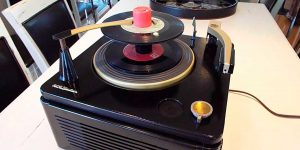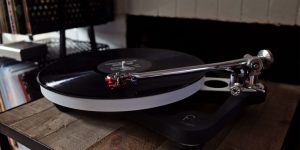Have you ever seen a vinyl turntable where the record is mounted vertically instead of lying horizontally? Well, that’s a vertical vinyl player. Some people find it compact, stylish, and cool. In this article, I will explain how it works, what keeps the record in this unusual position, and some of its benefits.
What are the benefits of a vertical turntable?
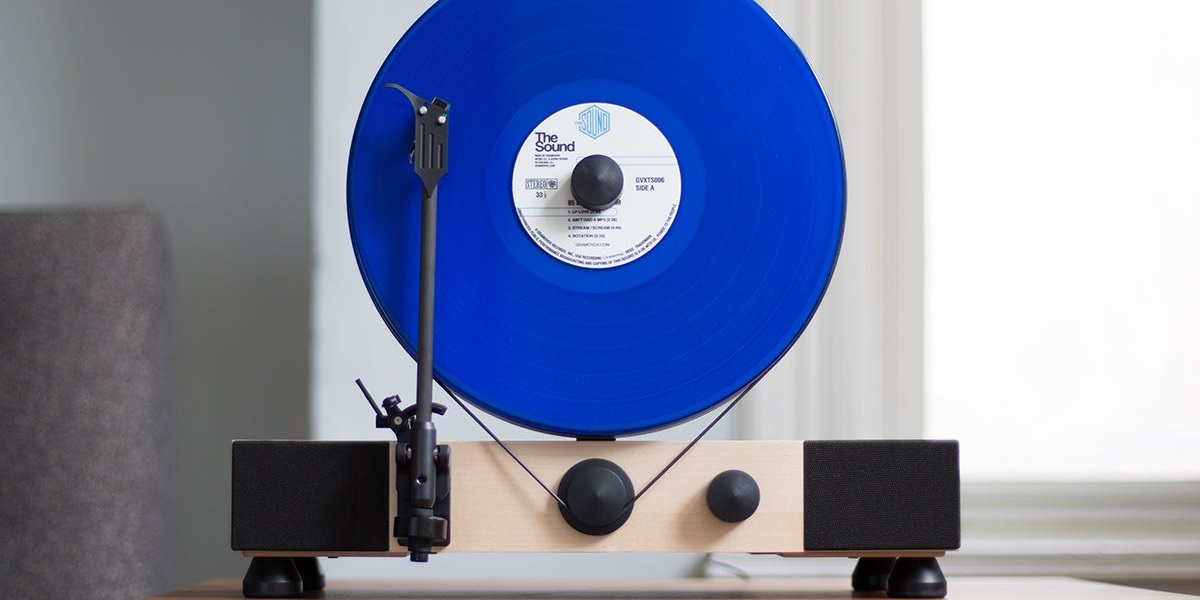
Actually, vertical turntables have become a trendy choice for vinyl enthusiasts because they offer a unique aesthetic appearance. But beyond the unique appearance, are there any real advantages of the vertical record player? Let’s see.
Let’s begin with the way how it actually works. There are a few different designs of vertical turntables on the market, and all of them operate on the same principle. The record is placed vertically on the disk and rotates at a constant speed. The tonearm and cartridge are also mounted on a vertical pivot, allowing them to move over the record’s surface while it is rotating. Then, the cartridge converts the vibrations of the stylus as it tracks the record’s grooves into an electrical signal.
Besides, the way how it operates depends on the type of vertical turntables. The most common type is the belt-driven turntable, which uses a belt to rotate the platter. These turntables are typically less expensive than other types and are easy to maintain. However, this type of device can sometimes produce a decent amount of noise.
Another type of vertical turntable is the direct-drive turntable. This record player directly connects the motor and the platter, which eliminates belt slippage and results in less noise. Such models are quite expensive, but provide better sound quality than their belt-driven counterparts.
Lastly, there are air-bearing turntables. They use compressed air to levitate the platter that leads to an extremely smooth and silent operation. These devices are typically the most expensive type of all vertical turntables.
Well, one of the benefits is the vertical rotation of the device that gives a possibility of placing the record on the platter without any worrying about the weight of the arm and cartridge, because they are both suspended above the platter. Additionally, this design solves difficulties with a cueing lever, as the tonearm can be moved directly over the willing starting point on the record.
The other advantage of such devices is that vertical turntables are made to be steady and not shake too much when they are playing music. This helps to prevent unwanted vibrations. So, it preserves sound quality and ensures you hear your vinyl records without any unwanted noise. Moreover, some vertical turntables come with built-in speakers, eliminating the need for a separate audio system.
However, if you consider buying a vertical turntable, there are a few things to keep in mind. First, vertical turntables tend to be more expensive than other horizontal models. Furthermore, vertical turntables may require specialized speaker systems to produce the best sound quality.
How to use a vertical turntable?
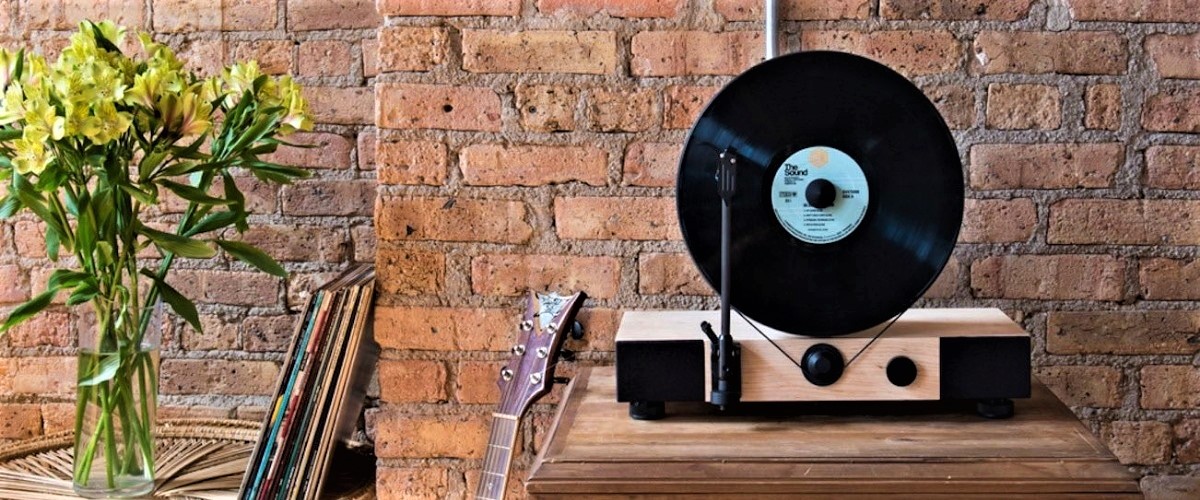
A vertical turntable can be a great addition to any home audio setup. But how do you operate one? I will provide you with a simple guide on how to use one properly.
Firstly, set up the turntable on a sturdy surface that is level so that the device does not wobble. Then, connect the power cord to the player and plug it into an outlet. Use the” Start” button once to turn it on and make the platter begin to spin.
After everything is set up, place a record on the platter, ensuring that it is centered on it. Next, lower the tonearm onto the vinyl so that the stylus is in contact with the LP to play correctly.
Once the record is playing, you can adjust the volume by using the volume knob on the turntable.
Eventually, to stop the record, lift the tonearm off of the record and press the “Stop” button. As you can see, there are no difficulties.

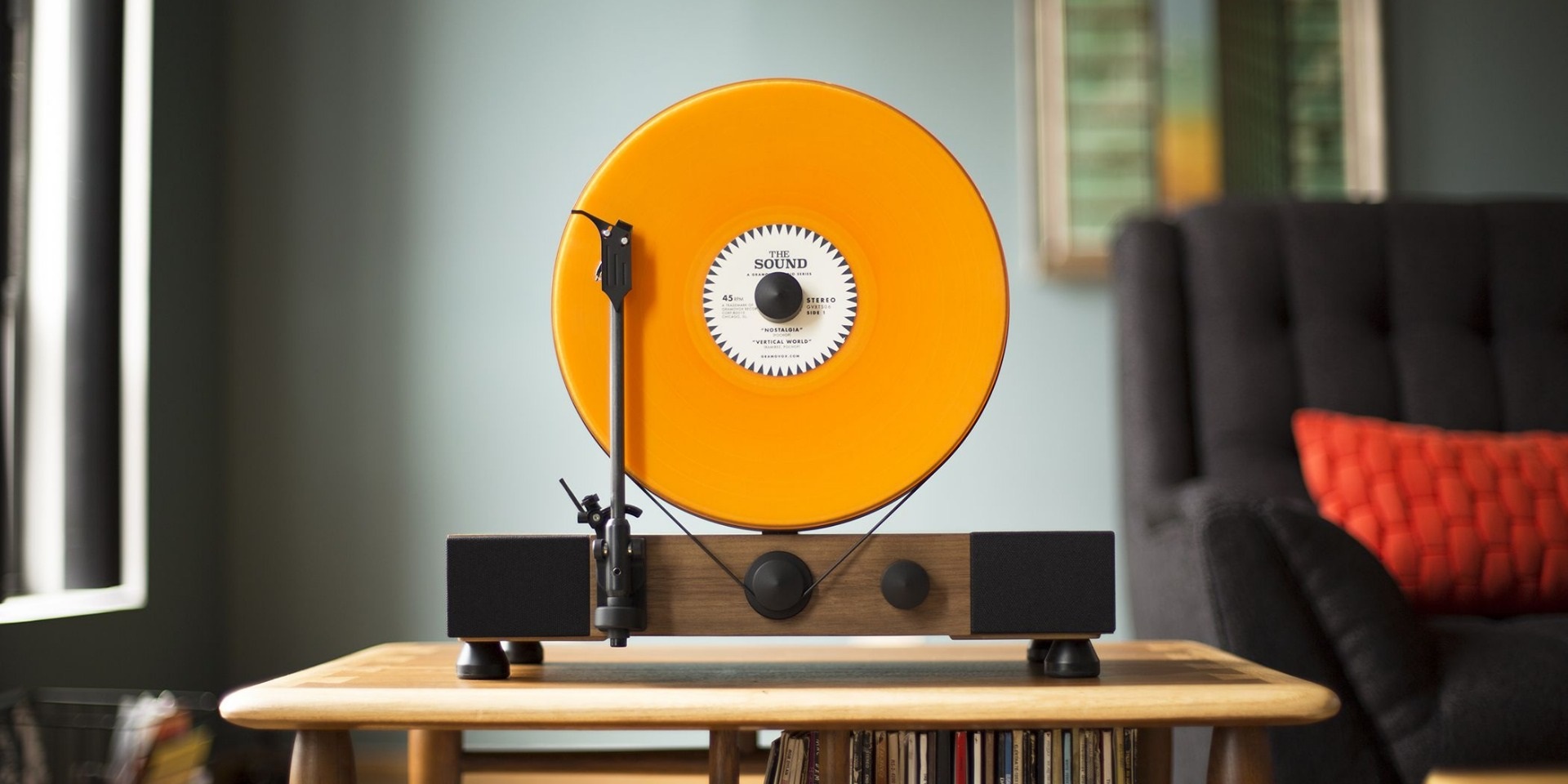


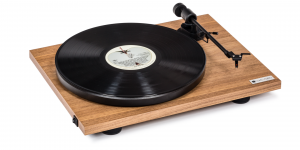
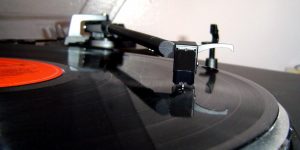

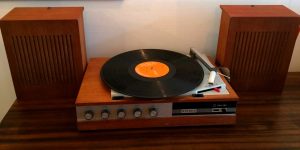
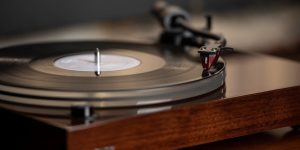

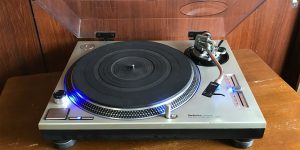
![Connect a Turntable to Your Wireless Bluetooth Speakers [Easy Guide]](https://www.vinylrecordday.org/wp-content/uploads/2021/12/tuntable-and-sonos-speaker-300x150.jpg)
